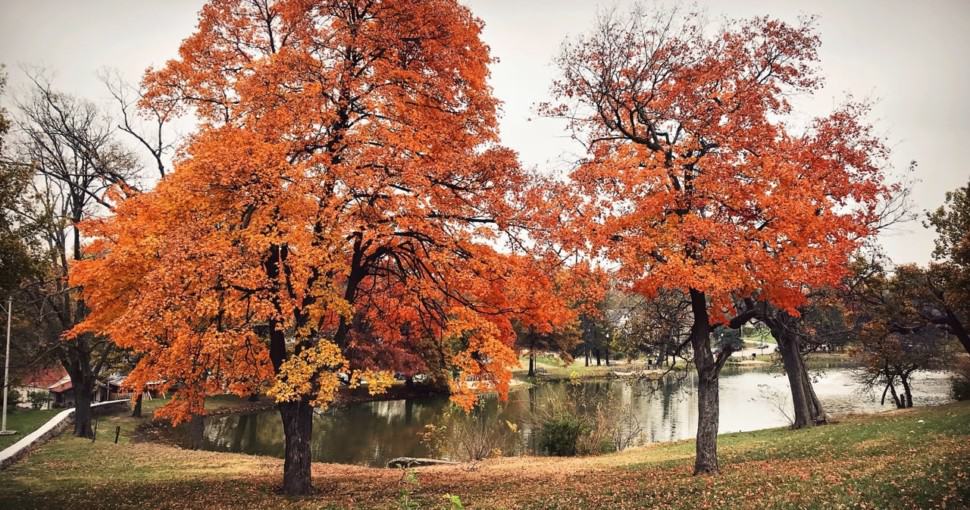Kansas is home to a wide range of trees, from the tall and hardy oak tree that can grow up to 65 feet tall, all the way down to the humble little pecan tree. In fact, Kansas has over 120 different types of trees that are native to our area.
Contents
- 1. Black Walnut (juglans nigra)
- 2. Bur Oak (quercus macrocarpa)
- 3. Osage Orange (maclura pomifera)
- 4. Cottonwood (populus)
- 5. Eastern Redcedar (juniperus virginiana)
- 6. American Elm (ulmus americana)
- 7. River Birch (betula nigra)
- 8. Sugarberry (celtis laevigata)
- 9. Sycamore (platanus)
- 10. White Oak (quercus alba)
- 11. Willow (salix)
- 12. Sugar Maple (acer saccharum)
- 13. Bald Cypress (taxodium distichum)
- 14. American Linden (tilia americana)
- 15. Hackberry (celtis occidentalis)
- 16. Catalpa (catalpa speciosa)
- 17. Common Persimmon (diospyros virginiana)
- 18. Eastern Hophornbeam (ostrya virginiana)
- 19. Green Ash (fraxinus pennsylvanica)
- 20. Flowering Dogwood (cornus florida)
- 21. Hickory (carya)
- 22. Red Hawthorn (crataegus mollis)
- 23. Buckeye (aesculus)
- 24. Downy Serviceberry (amelanchier arborea)
- 25. Pawpaw (asimina triloba)
- 26. Paper Mulberry (broussonetia papyrifera)
- 27. Pecan (carya illinoinensis)
- 28. Chinese Fringe Tree (chionanthus retusus)
- 29. Maidenhair Tree (ginkgo biloba)
- 30. Honey Locust (gleditsia triacanthos)
Kansas is a very large state with an incredibly diverse landscape. There are many different types of trees, and it can be difficult to figure out which ones are best for you. In this post, we will discuss the most common trees on Kansas parks, farms and in yards across the state.
The trees of Kansas are a mixed bag, but they all have one thing in common: they provide shade and beauty to the landscape. Whether you’re looking for a tree that produces nuts or flowers, each type can be found growing in Kansas! These trees will add an earthy touch to your garden, while also providing some much-needed oxygen during hot summer months.
If you’re looking for some help identifying your favorite type of tree, or just want to learn more about what kinds of trees there are in general, then this blog post is perfect for you!
1. Black Walnut (juglans nigra)
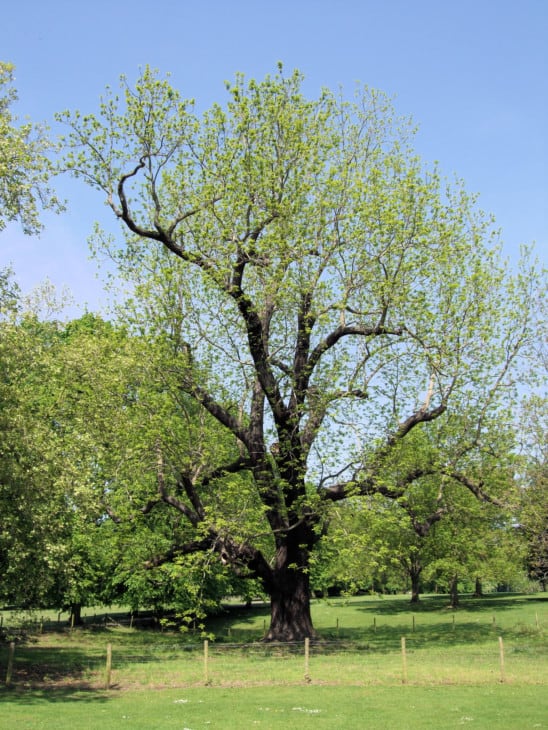
The Black Walnut trees are often planted in ornamental gardens because of their unique appearance. Because they are native to the state, they can grow anywhere in Kansas. They grow very tall and produce large nuts with creamy insides that contain vitamins and proteins. These nuts can yield up to 500 pounds per tree each year, which can make for an excellent source of income for farmers and landscapers.
The walnut is a majestic tree, which has been used for centuries as a source of food and medicine. It was considered sacred by many ancient cultures such as the Romans, Greeks and Egyptians. The hardwood of the Black Walnut is prized for its durability and natural beauty, making it an excellent choice as lumber or firewood.
2. Bur Oak (quercus macrocarpa)
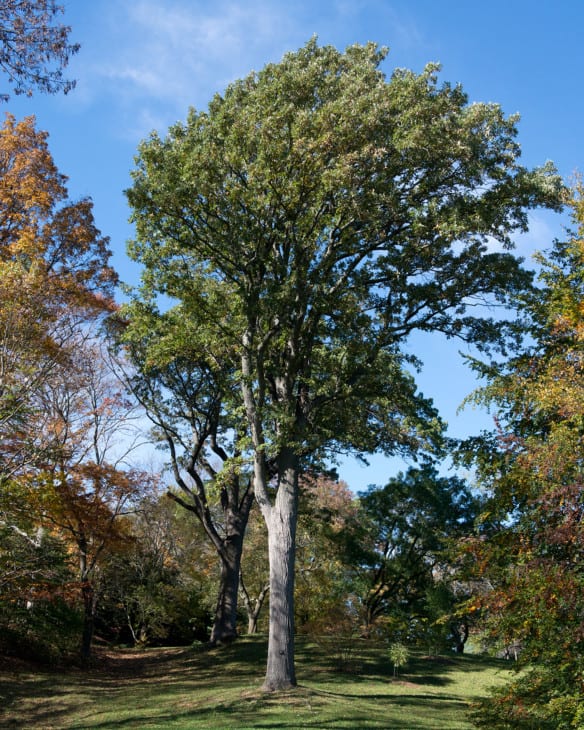
The Bur Oak is a stately tree that is native to Kansas and can be found in many different places throughout the United States. Its name comes from the fact that it produces acorns, making it easy to identify.
This species of tree has very deep roots and is a detriment to crops because it takes up so much moisture and nutrients in the soil.
It earned its name because people used to plant Bur Oak acorns in the spring, while they were still green, then wait for them to sprout into trees that would grow incredibly large. The resulting timber was therefore very dense and sturdy, which meant it was valuable to just about everyone.
3. Osage Orange (maclura pomifera)
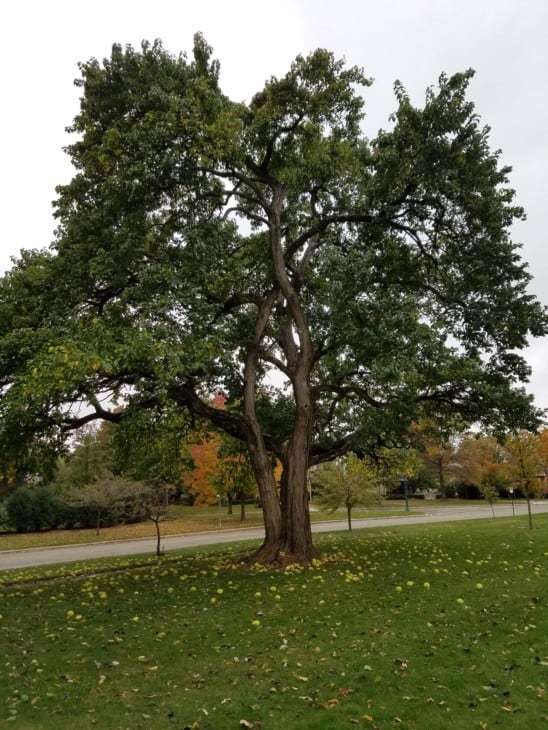
The Osage Orange is also known as the Hedge Apple. It has very widespread usage, but it is most commonly used to make cattle fencing. The seed of this tree produces an incredibly sticky sap that can be made into a form of glue or even rubber.
This unique plant belongs to the mulberry family and was one of the first fruit trees that was ever domesticated. It has been used for centuries as a source of food and medicine, and it is said to have made its way into the United States by the Osage Indians who cultivated it in their gardens.
4. Cottonwood (populus)
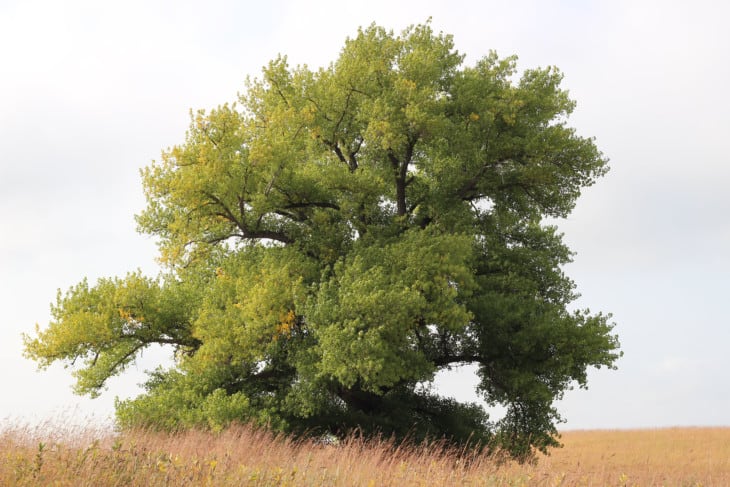
The state of Kansas is, like many other US states, no stranger to the Cottonwood tree. This tree is found across the entire country and can thrive in just about any state or province that has even a decent amount of precipitation.
These trees grow very fast and produce seeds and flowers early on, which means they can be considered invasive at times because they take over native plants so quickly. They also provide shelter for many different types of animals, which can be good for wildlife but not always great for farmers.
5. Eastern Redcedar (juniperus virginiana)
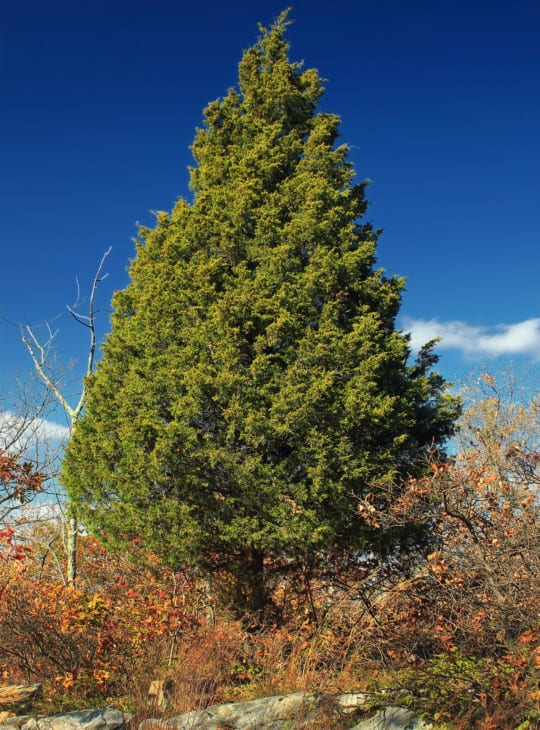
The Eastern Redcedar is a common sight along fence lines, ponds and roadsides in Kansas. It is characterized by its reddish-brown bark that contains ridges that are almost scale-like in appearance.
This plant can reach up to forty feet tall and it grows very slowly. Many people plant this tree as an ornamental only because it looks pretty or they want to make use of the dense foliage around the trunk.
However, this tree was also valued for its medicinal properties throughout history by Native American tribes who would use them for incense during religious ceremonies.
6. American Elm (ulmus americana)
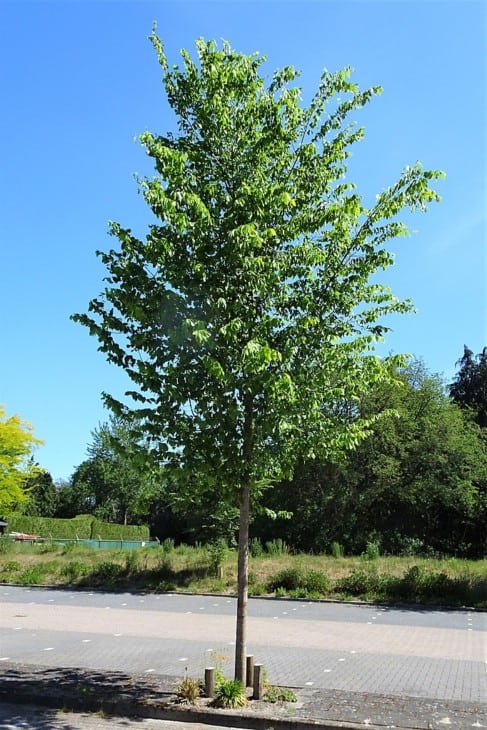
The American Elm is easily identifiable by its smooth, grey bark and graceful leaves. This common sight can be seen in many different parts of the state of Kansas during the spring and summer months because it grows quickly enough to cover large areas very quickly.
This common tree is extremely valuable for shade and shelter, which makes it a common choice for parks and other public spaces where people tend to congregate. However, this tree also has a reputation for being a common host to Dutch Elm disease that kills trees by clogging up their vascular system with fungi.
7. River Birch (betula nigra)
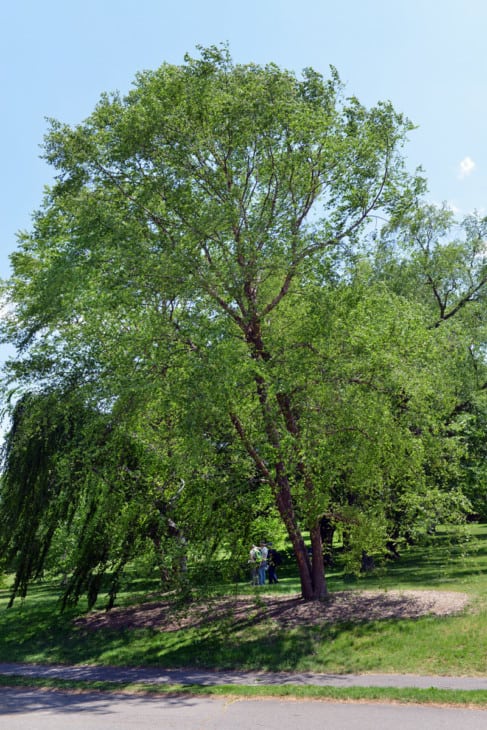
The River Birch is a common sight in Kansas, but it can also be found in most other lower 48 states. This tree has rough bark that is gray or black in color along with beautiful white flowers.
River Birch are common sights along rivers and near water sources because they love the wet environment, but people often plant them intentionally as well to add some beauty to their yards.
This tree is commonly referred to as the “Silky Birch” because its bark looks very similar to fine silk under several types of lighting conditions, depending on how thick or thin the ridges are.
8. Sugarberry (celtis laevigata)
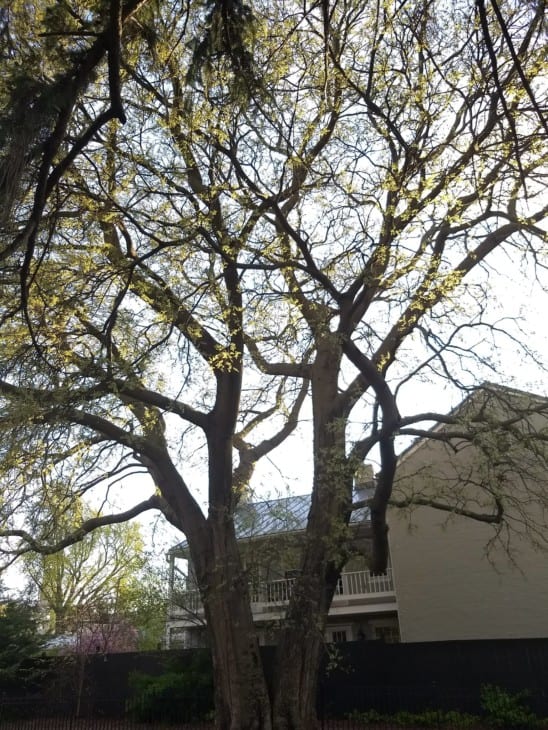
The Sugarberry is common in most of the southern United States, and it can be found in Kansas as well. This medium-sized deciduous tree has rough bark and dark green leaves with pale undersides that give the foliage a two-toned look.
The Sugarberry is common in yards or pastures where people allow deer to graze because these animals will often eat the leaves along with twigs and branches from the Sugarberry tree. Deer are common vectors for spreading this common tree’s seeds throughout their home ranges, which means they spread very quickly everywhere they go!
9. Sycamore (platanus)
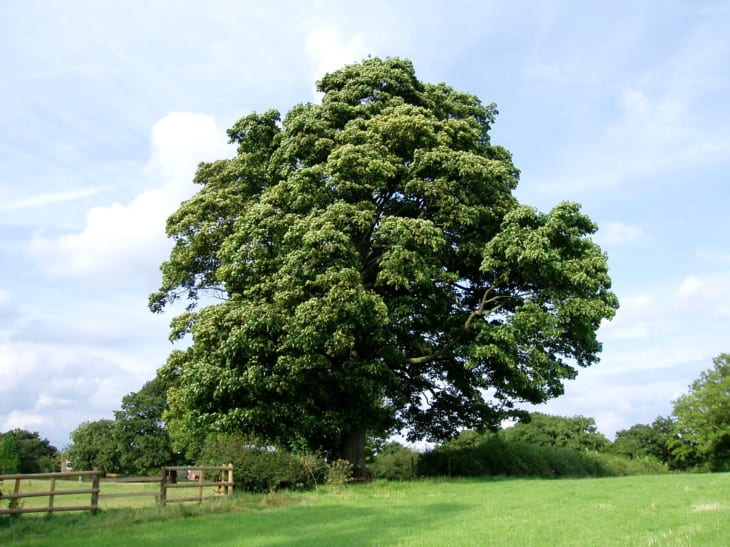
The Sycamore is common in Kansas, and it can also be found throughout the eastern United States near rivers or lakes that have soft soils.
Sycamores are common trees for their ability to recover from flooding by sending out new leaves from its roots very quickly. This common tree has a distinctive leaf shape with three major lobes and a long piece of foliage on each lobe’s end.
Although this common tree can shed a lot of leaves during winter months, there is one species of moth that depend on them as a food source for their larvae because they live off eating the bark and leaves underneath the outer layer!
10. White Oak (quercus alba)
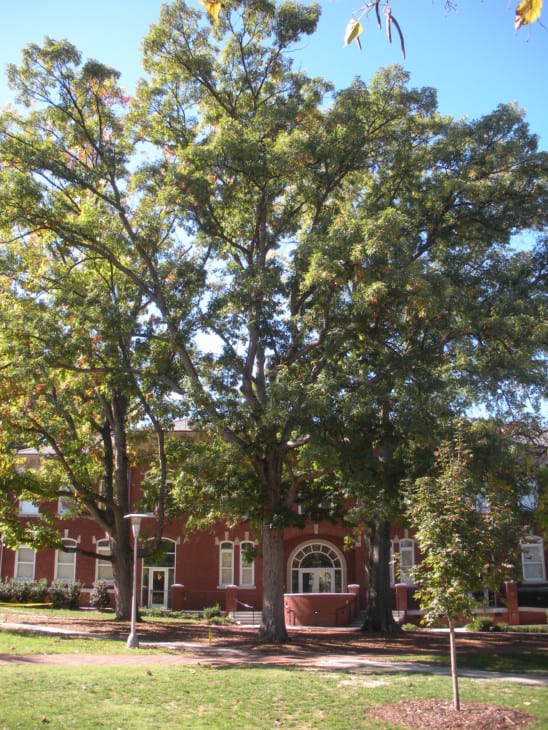
The White Oak is common in the eastern half of the United States, but it can also be found west of the Mississippi River Valley. This common tree has distinctive gray bark with deep ridges that makes it look scaly at times.
People often plant White Oaks because they are very shallow-rooted trees that will not damage houses or other structures if they fall down due to a big storm or other natural disaster.
However, people who have eaten acorns from this common tree know that they must only eat them after boiling them to get rid of a high level of tannins within them, since these naturally bitter substances can seriously harm their digestive system before being boiled!
11. Willow (salix)
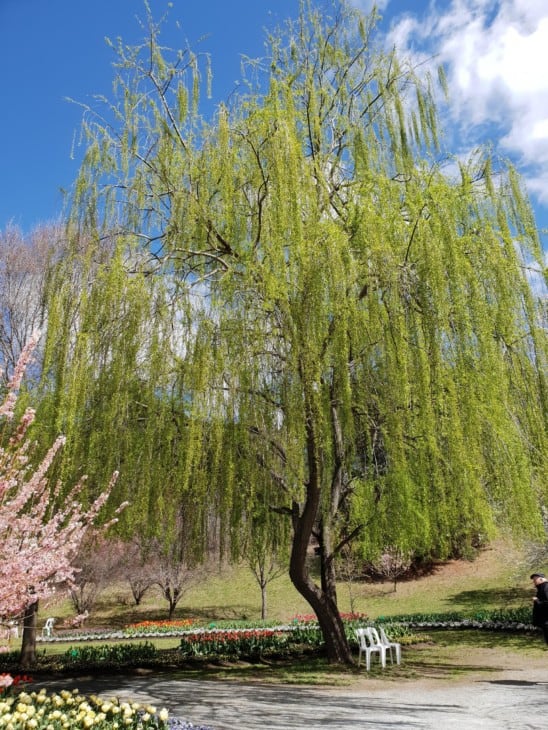
Willows are common in Kansas, and they can be common sights along rivers or streams.
Willows have long branches that hang down almost to the ground because these common trees rely on constant flooding to transport their seeds, which makes them common along places where flooding begins!
Willows’ leaves fan out at wide angles from each branch to allow as much sunlight as possible to reach the common tree’s photosynthetic parts.
However, willow bark has very powerful medicinal properties that make it common for pain-relief products today; Native Americans were using it for this purpose centuries ago!
12. Sugar Maple (acer saccharum)
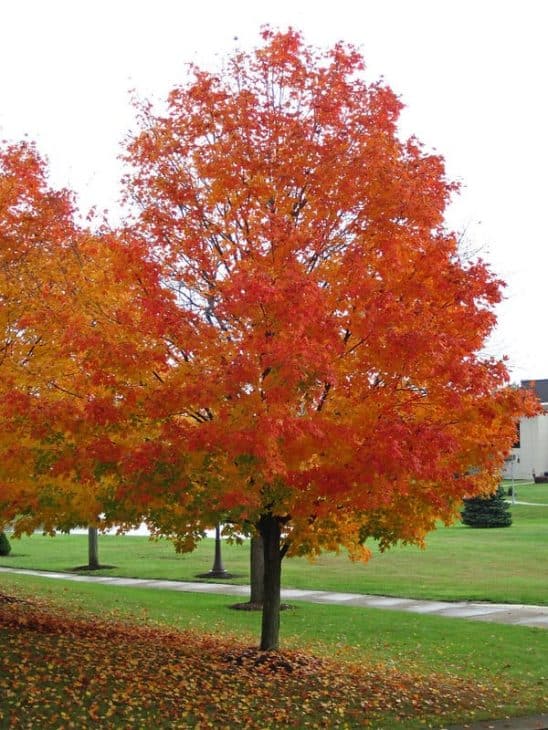
Sugar Maples are common in Kansas, and they can be common sights throughout the northern United States.
People plant Sugar Maples for their fall foliage, but these trees also produce sap that makes maple syrup common across North America.
The opposite sides of each Sugar Maple leaf is ranked by different colors of green to show which parts receive more or less sunlight throughout the tree’s life.
This common tree produces seeds with two wings that carry them on air currents through windy weather conditions, allowing them to spread very quickly over large forested areas.
13. Bald Cypress (taxodium distichum)
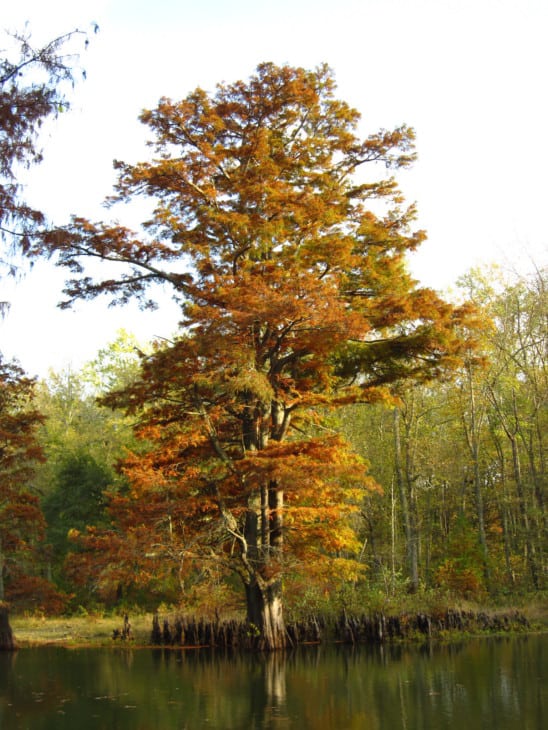
The Bald Cypress is common in the Southeastern United States, and it can also be found on some parts of the coastal regions of Kansas as well.
This common tree has distinctive bark that looks like alligator skin that makes it stand out from other trees; this tree’s bark even peels away in strips at certain times of year!
Bald Cypress wood is very rot-resistant, which makes this tree a popular choice for people to use when constructing decks or fences built out in water or wetlands.
People who know about the Bald Cypress say that its roots release chemicals into nearby soil where seeds begin developing, so they can prevent competing plants from growing nearby!
14. American Linden (tilia americana)
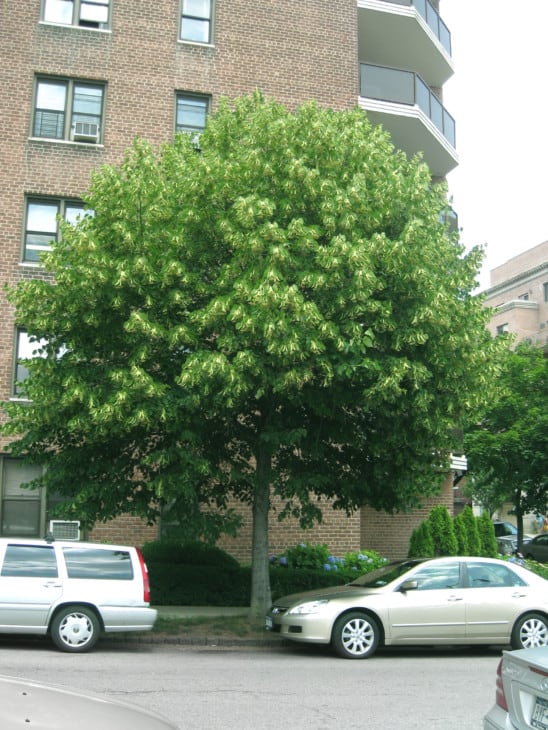
The American Linden is common throughout the northeastern and midwestern United States, and it can also be found in Kansas.
People plant American Lindens because they produce a lot of flowers that start growing during very early spring before other trees begin producing their own leaves.
15. Hackberry (celtis occidentalis)
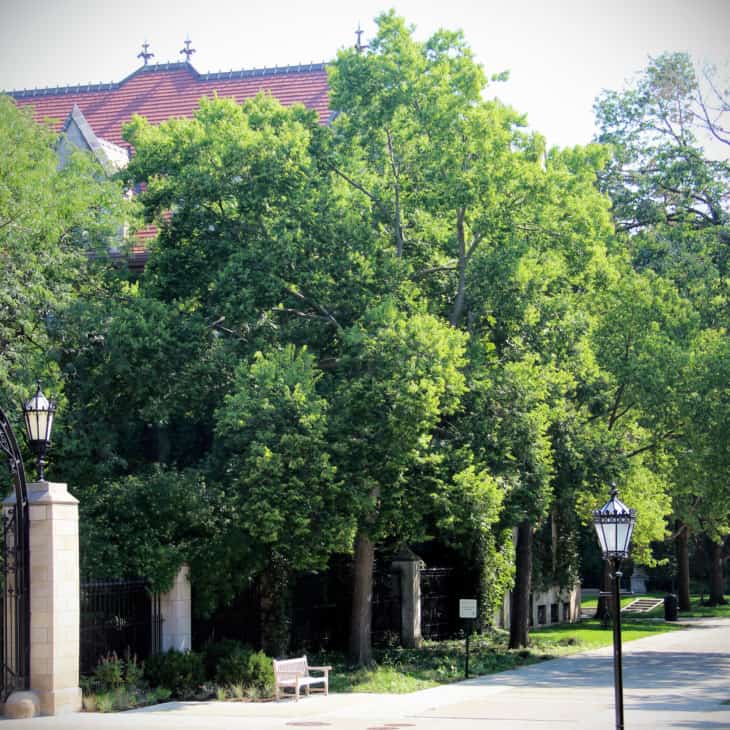
This common tree is sometimes called a sugarberry, and it is found throughout the eastern half of the United States, Kansas being no exception.
Hackberries have seeds that look like small bananas because they are oval-shaped with a pointed end!
People plant Hackberries to help control erosion along riverbanks or within other wetlands, but its wood is very heavy and dense so it also has been used as a substitute for lead in manufacturing things such as bullets and fishing sinkers!
16. Catalpa (catalpa speciosa)
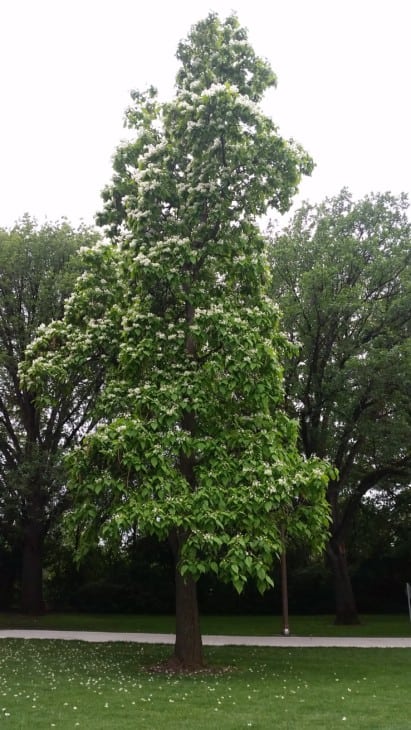
The Catalpa is common throughout the southeastern United States, and it can also be found in parts of Kansas too.
People plant Catalpas because they are fast-growing trees that offer shade to nearby homes or other buildings – this tree does not produce any leaves during autumn months!
However, these trees are most famous for their long cylindrical flowers that grow on catalpa spurs, which are very distinctive compared to flowers produced by other common trees!
17. Common Persimmon (diospyros virginiana)
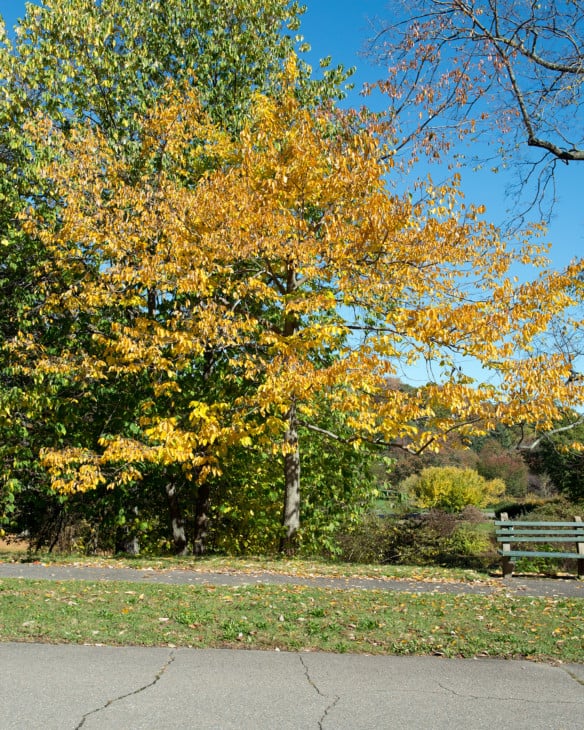
Persimmon trees are fruit trees that are common to North America, and they can be found in parts of the Midwest including Kansas.
People plant this tree around their homes because it produces large orange fruit that tastes like custard when ripe!
However, its leaves produce a chemical that’s poisonous to living things unless they’re burned or completely dried up first, so it’s best not to eat any part of the Persimmon before its leaves fall off during autumn months.
18. Eastern Hophornbeam (ostrya virginiana)
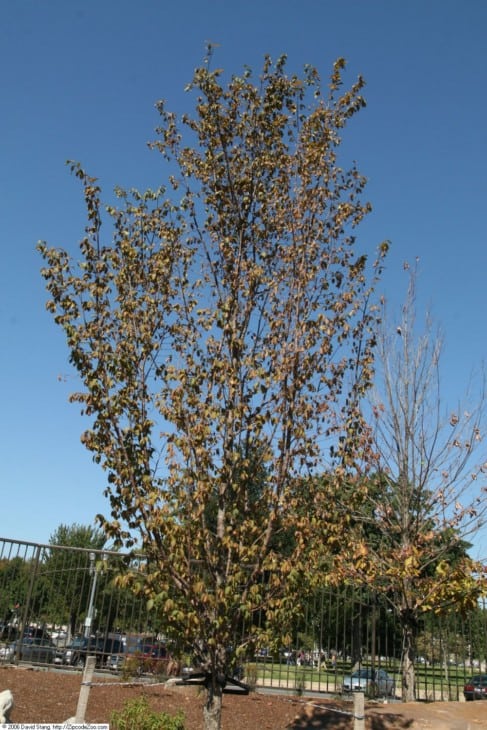
This common tree is sometimes called a hophornbeam, and its wood has been used to make barrels for people who produce alcoholic drinks such as wine or beer!
While its branches grow out like antlers from a deer, they do not grow out straight like those of an Elk – instead, these branches always bend slightly towards East and West; this means that during autumn months leaves only turn yellow on their backsides that face southward!
19. Green Ash (fraxinus pennsylvanica)
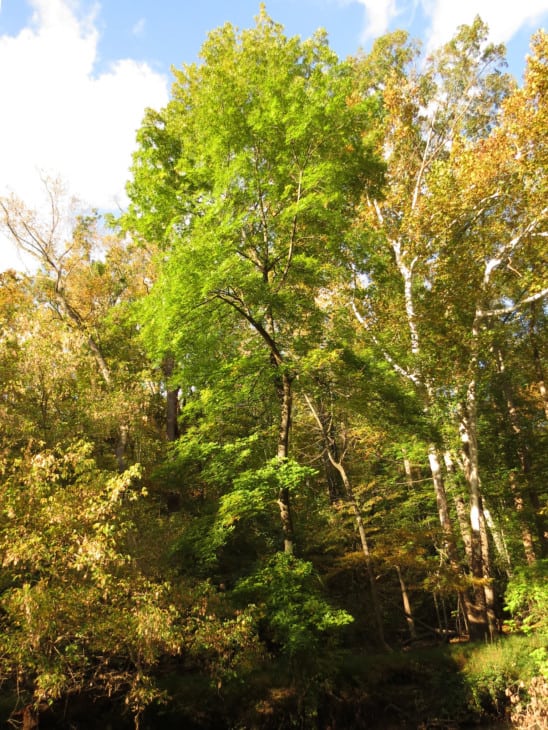
The Green Ash is common throughout the entire Midwest, and it can also be found in Kansas.
People plant this tree along their driveways or sidewalks because its roots grow incredibly deep within soil, which helps prevent erosion from occurring nearby!
20. Flowering Dogwood (cornus florida)
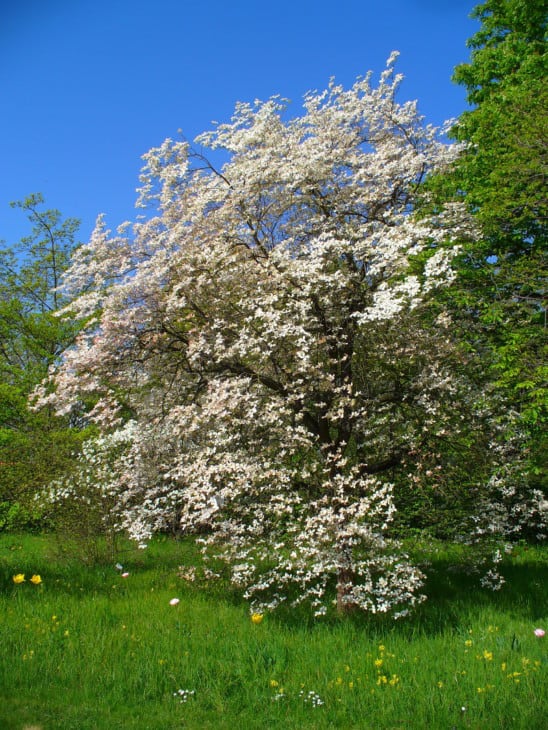
This tree is most famous for producing big white or pink flowers during spring months, and it is most common throughout the eastern half of the United States, including Kansas!
The nice thing about flowering dogwood trees is that their flowers do not only attract bees and butterflies, but they also provide plenty of food for them too!
21. Hickory (carya)
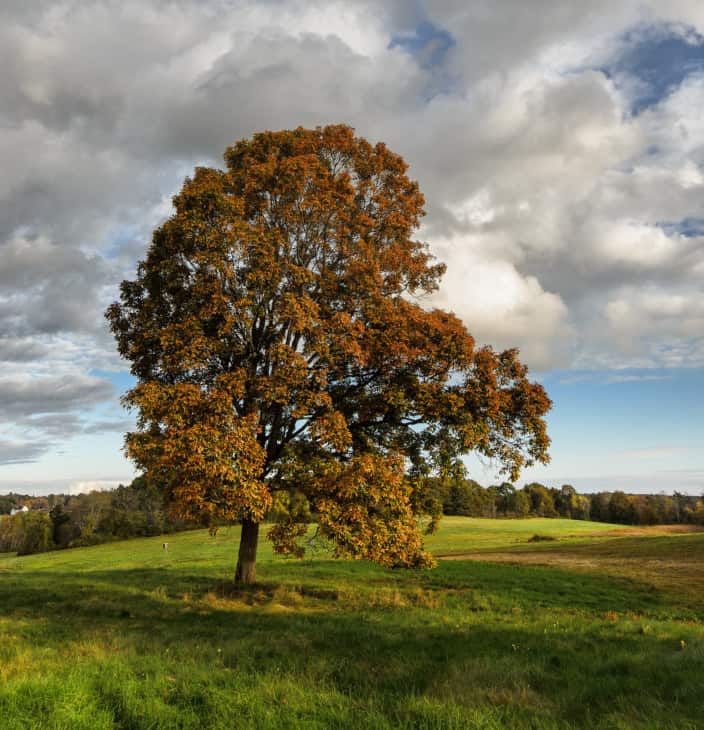
Six types of Hickory trees grow throughout North America, and Kansas is home to two of them: Shagbark and Shellbark.
These trees can be found growing within forests or near streams within moist soil, and they produce large nuts that people eat after roasting them over a fire!
However, the nuts also contain toxic chemicals such as hydrocyanic acid (which sounds dangerous but it’s actually not as bad as you might think). Plus some insects like the hickory tussock moth feed on these leaves during autumn months which helps keep their populations under control.
22. Red Hawthorn (crataegus mollis)
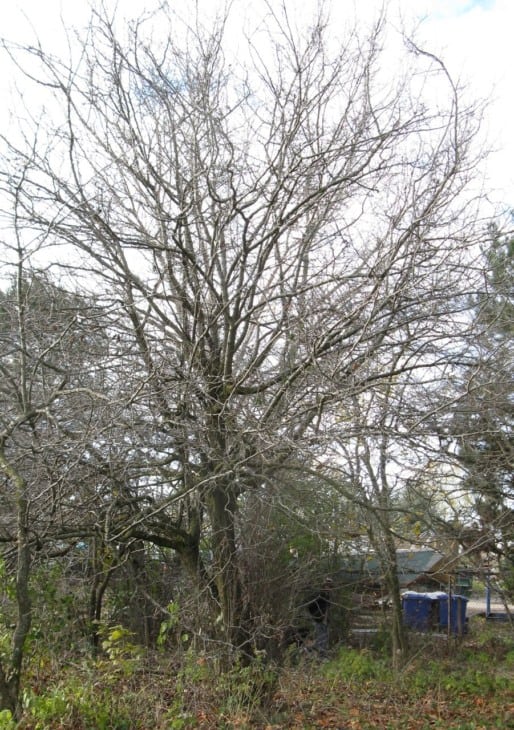
The red Hawthorn is a tree that grows throughout the eastern half of North America, and it can also be found growing in Kansas too!
People plant these trees near their homes because they grow into thickets with arching branches that help prevent erosion along banks or within other wetlands.
23. Buckeye (aesculus)
The Buckeye is a common tree throughout the Midwest, and it can also be found growing in Kansas.
This tree becomes famous during autumn months for producing yellow leaves that look like cat-o-nine tails, which fall from its branches before turning brown during winter months.
24. Downy Serviceberry (amelanchier arborea)
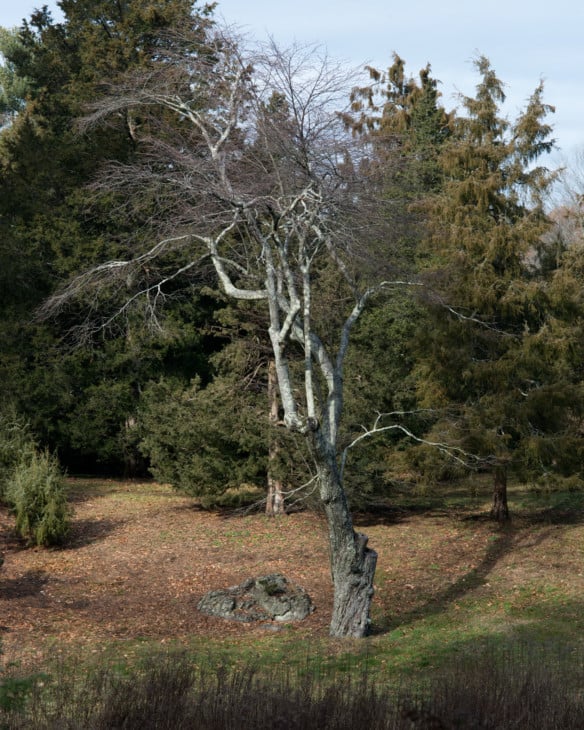
This common tree is sometimes called a shadblow serviceberry, and it grows in moist forests or near rivers with moist soil that has plenty of sunlight throughout Eastern North America including Kansas!
The nice thing about this tree is that its flowers attract bees during spring months, which provide nectar for their colonies.
25. Pawpaw (asimina triloba)
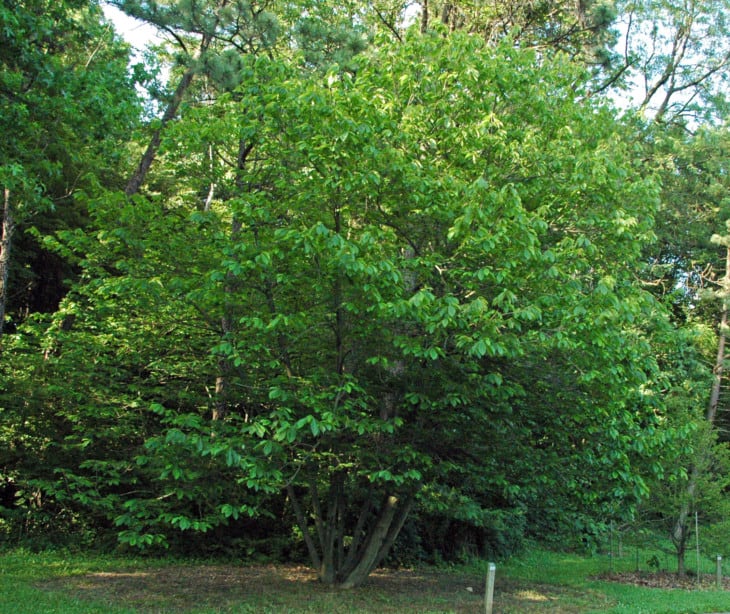
The pawpaw tree is famous for producing large green leaves, which have three distinct lobes that grow on separate stems. It’s also native to both the Midwest and Kansas!
Its flowers are famous for producing a sweet scent that smells like vanilla, and they attract butterflies during spring months. People like the pawpaw tree because it produces big yellow-green or brown fruits that taste like bananas, and these can be eaten raw after cutting them open to remove the seeds!
26. Paper Mulberry (broussonetia papyrifera)
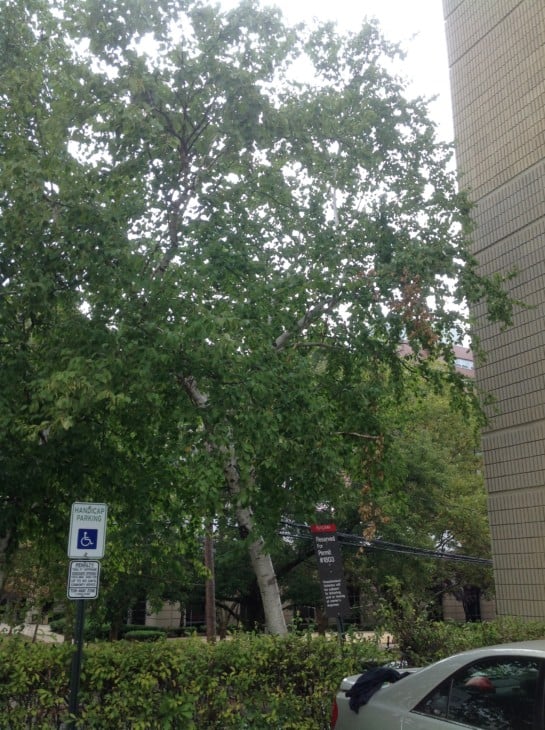
This tree is most famous for producing large white flowers during spring months followed by paper-like fruits that attract birds or other types of animals.
The paper mulberry tree grows in moist areas that have plenty of sunlight, and it can be found growing near rivers or on the shorelines of ponds!
In Kansas, the paper mulberry tree is a popular tree along highways because it tolerates salt and its roots prevent erosion from occurring nearby.
27. Pecan (carya illinoinensis)
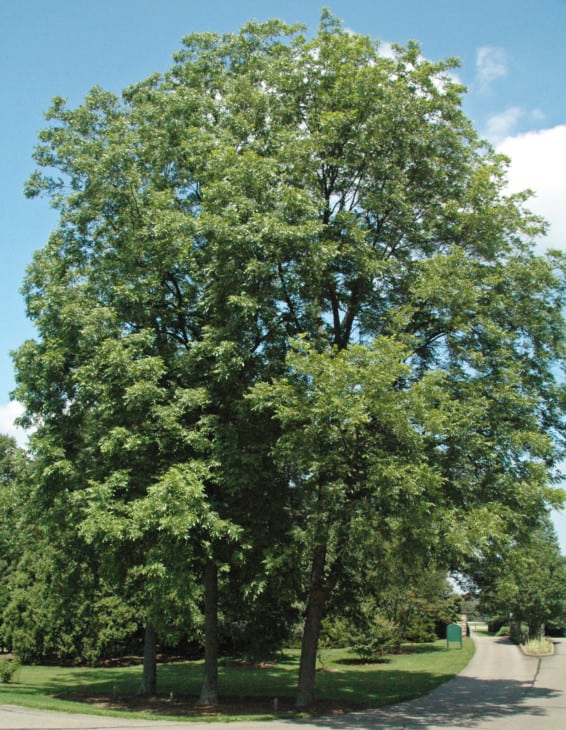
The pecan is a type of hickory tree that grows throughout North America, and it can also be found growing in Kansas too!
It’s also famous for being one of few trees that produces nuts with a hard shell, but the tradeoff is that its wood isn’t very strong.
The nuts of the pecan tree taste delicious after roasting, especially when they’re ground into pecan butter.
28. Chinese Fringe Tree (chionanthus retusus)
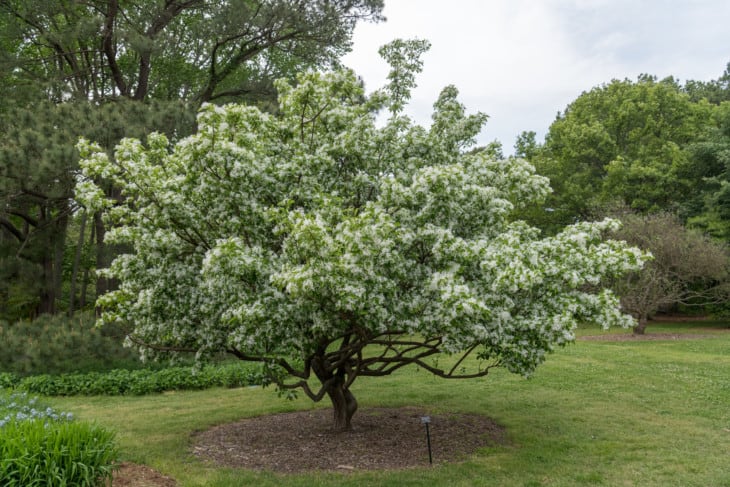
This tree is also called a white fringe tree, and it’s a popular choice in Kansas for planting along highways because its root system helps prevent the erosion of nearby soil.
The Chinese Fringe Tree can be found growing throughout Eastern North America including Kansas, and its seeds remain attached to its branches after they turn brown during winter months.
29. Maidenhair Tree (ginkgo biloba)
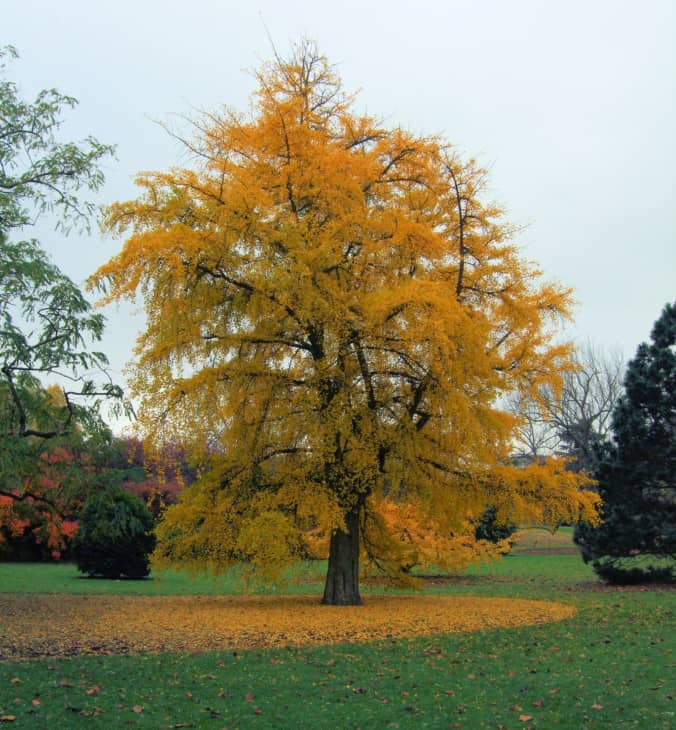
This tree is a type of gymnosperm, meaning it doesn’t produce flowers or fruits. However, its seeds are famous for being shaped like apricots!
The maidenhair tree produces two types of leaves, and each one is unique in shape. But the most special thing about this tree is that it’s considered a living fossil because it hasn’t changed in over 200 million years! In fact, this tree has been around even before dinosaurs existed!
30. Honey Locust (gleditsia triacanthos)
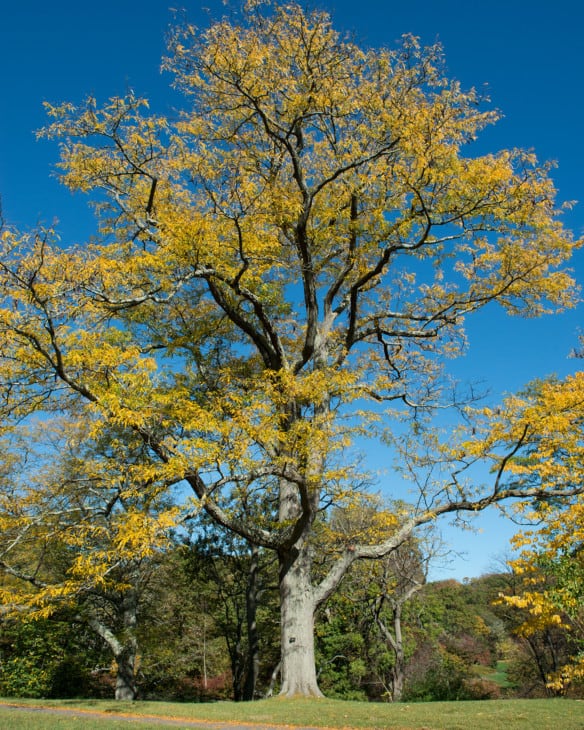
The honey locust tree is famous for producing long green pods that contain hard seeds inside with a sweet taste, making them delicious after roasting. The leaves of this common tree have three lobes and grow on long stems from the branches too.
In Kansas, you can find the honey locust tree growing near rivers and in wooded areas that have plenty of sunlight.
Honey locust trees grow quickly, and they’re sometimes used for producing hardwood that is similar to maple.

